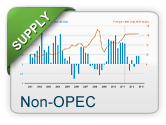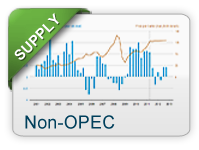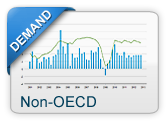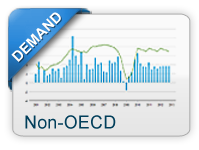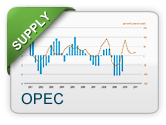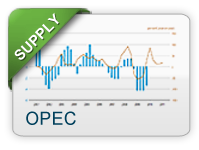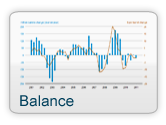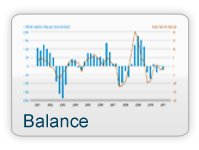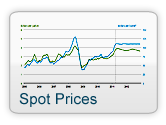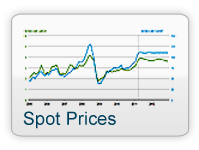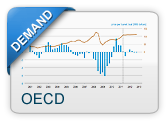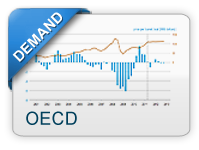What drives crude oil prices: Supply OPEC
Crude oil production by the Organization of the Petroleum Exporting Countries (OPEC) is an important factor that affects oil prices. This organization seeks to actively manage oil production in its member countries by setting production targets. Historically, crude oil prices have seen increases in times when OPEC production targets are reduced.
OPEC member countries produce about 40 percent of the world's crude oil. Equally important to global prices, OPEC's oil exports represent about 60 percent of the total petroleum traded internationally. Because of this market share, OPEC's actions can, and do, influence international oil prices.In particular, indications of changes in crude oil production from Saudi Arabia, OPEC's largest producer, frequently affect oil prices.
The extent to which OPEC member countries utilize their available production capacity is often used as an indicator of the tightness of global oil markets, as well as an indicator of the extent to which OPEC is exerting upward influence on prices. EIA defines spare capacity as the volume of production that can be brought on within 30 days and sustained for at least 90 days. Saudi Arabia, the largest oil producer within OPEC and the world's largest oil exporter, historically has had the greatest spare capacity. Saudi Arabia has usually kept more than 1.5 - 2 million barrels per day of spare capacity on hand for market management.
OPEC spare capacity provides an indicator of the world oil market's ability to respond to potential crises that reduce oil supplies. As a result, oil prices tend to incorporate a rising risk premium when OPEC spare capacity reaches low levels. From 2003 through 2008, OPEC's total spare capacity remained near or below 2 million barrels per day (or less than 3 percent of global supply), which provided very little cushion for fluctuations in supply in a context of rapidly rising demand. Markets are influenced by geopolitical events within and between OPEC countries because they have, historically, resulted in reductions in oil production. Given OPEC's market significance, events that entail an actual or future potential loss of oil supplies can produce strong reactions in oil prices.
Despite OPEC's efforts to manage production and maintain targeted price levels, member countries do not always comply with the production targets adopted by the organization. Oil prices can be affected by member countries' unwillingness to maintain production targets. In addition, unexpected outages can reduce OPEC production. The amount of the disruption, how quickly it occurs, and the uncertainty of restoring the output have considerable influence on oil prices.
Natural gas liquids (NGLs) are not included in OPEC production allocations and can provide substantial additional volumes to world liquids supply.
The behavior of oil prices depends not only on current supply and demand, but also on projected future supply and demand. OPEC adjusts member countries' production targets based on current and expectations of future supply and demand. Estimating future supply and demand, however, is especially challenging when market conditions are uncertain and are changing rapidly. There can also be significant lags in OPEC production target adjustments in response to market conditions, which also can impact prices.

